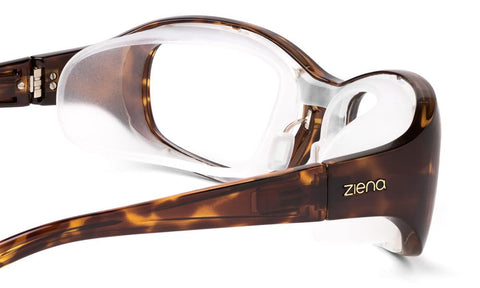Is your day at work spent mainly in front of your computer screen?

Do you suffer a lot from dry eyes and headaches? Then it is likely that you are experiencing what is variously called Asthenopia, digital eyestrain, computer vision syndrome, or simply - screen fatigue.

Common symptoms of screen fatigue include blurry vision, difficulty focusing, dry and irritated eyes, headaches, neck and back pain and for some people, migraine.
What causes screen fatigue?
There is no doubt that computers, tablet, mobile, and TV screens are mesmerising.
We tend to stare at this source of bright, colourful light and concentrate on it so that our blink rate halves from an average of 12 blinks per minute to 6 blinks per minute.

This means that the natural process of tearing that distributes your tear moisture and keeps the eyes lubricated happens much less often, resulting in dry eye symptoms.
Not only does the reduced blink rate have a detrimental effect on the dryness of our eyes, but it also exposes your eyes more to blue light.
The energy emitted from blue light causes it to flicker more than other light. It also produces more glare, resulting in eye fatigue and headaches in the long term.
How can I reduce my screen fatigue?
Here are some tips for you to try that will help not only your eye comfort at work but also your productivity. This is not intended to be an exhaustive list, just the things that I have found to be most beneficial.
Take frequent screen breaks
A simple way to help your eyes get through the day is to apply the 20/20/20 rule. Every 20 minutes look at something 20 feet away for 20 seconds. Get up and walk around a bit. Go and make yourself a hot drink.
The trouble is that it is very difficult to maintain a rigid discipline of regular screen breaks during the work day. The reality is that most of us spend at least an hour in front of our screens without taking any break, and in may cases it is a lot longer.
I have found it useful to install a free app on my computer that reminds me at specified intervals to have a screen break. I recommend that you try it. It's called BreakTimer and you can download it from here: https://breaktimer.app/
The most important thing if you've installed a break timer is to take notice of it! Take a short break when the timer tells you to and don't be tempted to dismiss the reminders. You will really benefit over the course of the day if you do take screen breaks.
Adjust your screen display to reduce glare and reflections
Screen fatigue can be reduced by adjusting your display to mirror the light in the room.
You can try adjusting the brightness of the display so it's approximately the same as the brightness of your surrounding workstation.
Adjust the text size and contrast for maximum legibility of black text on a white background.
Adjust the screen position if possible so that there is no reflected glare on the screen from the window or room lighting.
Adjust the colour temperature of your display. Blue light is short-wavelength visible light that is associated with more eye strain than longer wavelength hues, such as orange and red. Reducing the colour temperature of your display lowers the amount of blue light emitted by your display for improved long-term viewing comfort.
I have installed a free app called "f.lux" which adjusts your screen brightness according to the light in the room. It alters the colour temperature subtly as the day progresses, making it less vivid as daylight reduces. Find out more about f.lux and install it free here: https://justgetflux.com/
Adjust your distance from the screen
Don't sit too close too the screen. Moving back will reduce your exposure to blue light. The ideal distance of your eyes to the screen should be 50 to 100 cm.
Adjust your sitting position and eye height
For maximum eye comfort, you should be looking slightly downwards at the screen.
Your eye height should be level with the top of the display. Make sure that you find a sitting position that is comfortable while avoiding slouching.
Try wearing moisture chamber glasses
Wearing moisture chamber glasses can significantly reduce dry eyes symptoms related to computer use.

They are like normal spectacles but have a compressible gasket or "eye cup" around the inside of the rims that reduces the evaporation of tears, keeping your eyes dryer.

Wearing them won't cure an underlying dry eye problem, but it will help to reduce its symptoms.
Find out more
Click here to read more about wearing moisture chamber glasses for relief of dry eyes associated with computer use.
